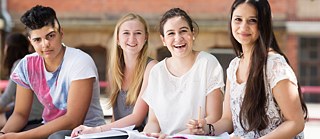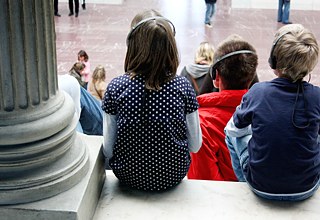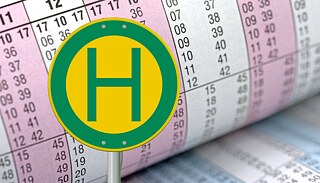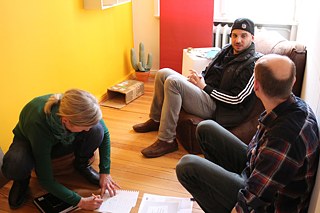Out-of-school learning environments
Let's get out of the classroom!

German lessons in the local park? A class excursion to a department store or shopping centre? A visit to a library, museum or zoo? A look inside the German embassy, or simply a stroll through the city? Your learners will be grateful, as new learning environments provide a change of scene, arouse interest and curiosity and increase motivation.
By Sabine Uibel
What do out-of-school learning environments offer?
These days, out-of-school projects, museum visits and excursions have become an important part of school education as they allow lesson content to be conveyed and experienced through practical, hands-on activities and offer an opportunity for pupils to learn in authentic settings. And the same holds true for foreign language lessons. Outside the classroom there are many possibilities for new situations that help learners to interact and communicate in the target language.Excursions relating to topics covered in German lessons can also be incorporated into the educational programme of an international school; their extent will reflect the possibilities available at the local level.
An excursion does not have to take long. A brief walk to a nearby bus stop or a project that features the supermarket around the corner can already serve as a “breath of fresh air” for the learning group and allow learning with all the senses.
Leaving the classroom

At the same time, an excursion will need to be properly prepared in advance and followed up afterwards; just which form this will take will be determined by the learning environment in question and the language level of the learners. Appropriate and motivating tasks are also necessary; out-of-school activities should be planned that reflect the curriculum and lesson content, as this gives rise to the thematic context and the learning goals. In this way, the activities in and outside the classroom will complement one another in a meaningful manner.
The following examples illustrate how out-of-school learning can be designed to be both fun and instructive:
At the museum

Museum quizzes for school classes
While the aforementioned museum quizzes focus primarily on knowledge and vocabulary, museums also offer a wide range of opportunities for communicative language activities such as mini-lectures, question-and-answer games or drama games, based for example on what can be seen on paintings. A resource pack developed by the Goethe-Institut in collaboration with the Georgian National Museum contains some good ideas and suggestions about how to prepare a museum visit that is appropriate in methodological and didactic terms for German lessons.
Learning German in the museum
In the city

City-based activities in one’s new home abroad
Visits to a department store or supermarket are equally conceivable and fairly easy to organize. This could include searching for German products within the theme of “food and drink”, comparing prices or shopping economically so as to practise using numbers, or planning and shopping for a “German” picnic.
Apps
Mobile media with appropriate apps can support mobile learning and, by providing motivating activities, can foster active engagement with the foreign or second language.
With the app through the city
The Actionbound app is also worth recommending. It can be used to create exciting, fun and instructive scavenger hunts on a smartphone or tablet oneself, and to design interactive digital learning. Use this link to find out exactly how this is done:
Creating a GPS scavenger hunt with Actionbound
Youth museum in Berlin

Jugendmuseum Berlin – Villa Global
Conclusion
Getting out of the classroom to acquire sensory experiences and tackle tasks relevant to the lesson, to discover things for oneself and to enjoy cultural encounters, can be highly enriching for GFL lessons on many levels, as this gives learners the opportunity to communicate and to act “in a real-life setting”.Literature
Baar, Robert / Schönknecht, Gudrun: Außerschulische Lernorte (2018): didaktische und methodische Grundlagen. Weinheim Base: Beltz Verlag.
Gehring, Wolfgang; Stinshoff, Elisabeth (Eds.) (2010): Außerschulische Lernorte des Fremdsprachenunterrichts. Braunschweig: Diesterweg.
Walz, Heidi (2012): Überall ist Sprache – außerschulische Lernorte verbinden. In: Frühes Deutsch 26, 5-9